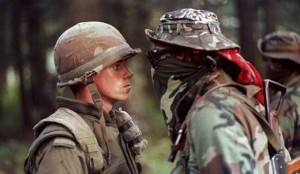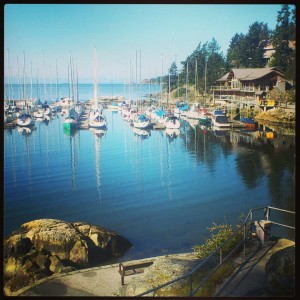I will be discussing question 2, by examining the Indian Act 1876.
The Confederation which took place in the late 19th century required loyalty on the part of Canadians. A unified cultural identity was seen as necessary to ensure national unity at a time of great change. The Indian Act of 1876 was a way to eradicate these cultural differences that were seen as a hindrance to nation building. The act has been described as a type of assimilationist legislation enacted by the Canadian government. They exerted authority over the Indigenous peoples and their lands by attempting to erase cultural, social, economic and political differences ( “Nationalism, late 1800’s-1950’s”, canlitguides.ca). The act consolidated and expanded upon existing legislation by codifying prevailing Euro-Canadian cultural attitudes. Which included the belief that the settlers were superior to the “backward” Indians and felt that it was “the white man’s burden” to civilize them” (Smith 2). The act impacted on the day-to-day lives of Aboriginal people. They interfered with traditions by banning potlaches, and placing children into residential schools ( “Nationalism, late 1800’s-1950’s”, canlitguides.ca).
Racial classification and Euro-centric paternal ideas played a fundamental part in this act. Racial identity was understood to be based on the patrilineal principle of descent in which “the definition of Indian was decided largely through a person’s relationship with a Native man” (Razack 55). The construction of “Indian-ness” was seen as an economic necessity to protect privilege and property. The fixed nature of these constructed identities meant that half-mixed women were excluded from property and legal rights. Their presence marked a threat to the creation of a racial hierarchy as they could cross “racial and sexual boundaries” (Razack 178). Their absence of legal and spatial rights meant that they existed in “zones of violence” (Razack 178). These spaces ensured the “naturalness of white innocence and aboriginal degeneracy” (Razack 178). Thus, they were falsely seen as sexually transgressive and in need of policing.
Urban spaces such as East Vancouver, re-map these zones of violence through the subordination of Indigenous women. In East Vancouver, they are separated from society by their blocked social and economic mobility. They face “social deficits such as inadequate access to counselling services, life skills training, child care,recreation and health care services” (Wallis et al 237). They also face inequality in terms of gaining employment which results in a large number of individuals living below the poverty line. These socio-economic factors ensure that they remain within the zone, and do not cross the colonial line. Their invisibility is marked by the normalization of violence against Aboriginal women. The large number of unsolved cases regarding missing and murdered women sadly characterizes this area.
The policies of the Indian Act which placed individuals into distinct racial categorizations reflects Coleman’s conception of civility. These categorizations meant that individuals were denied legal rights and socio-economic mobility. They existed in zones which were constructed outside of Canadian citizenship which made violence acceptable (space becomes place through the presence of law). This hidden violence allows white civility to thrive through the forgetting of colonial violence while also quarantining “the uncivil past from the civil present” (Coleman 34). All of these factors allow the white fictive ethnicity of normalcy and privilege to be constructed in opposition to Aboriginal degeneracy.
Works Cited:
CanLit Guides. “Reading and Writing in Canada, A Classroom Guide to Nationalism.” Canadian Literature. Web. June 27th 2015.
Coleman, Daniel. White Civility: The Literary Project of English Canada. Toronto: University of Toronto Press. 2008. Print.
Hanson, Eric. “The Indian Act”. UBC Indigenous Foundations. 2009. Web. <http://indigenousfoundations.arts.ubc.ca>
Hundreds March In Vancouver For Missing & Murdered Women.” Popular Resistance . The Canadian Press , 16 Feb. 2015. Web. 28 June 2015. <https://www.popularresistance.org>.
Razack, Sherene H. Race, Space and the Law. Toronto: Between the Lines, 2002.
Smith, Keith D. Strange Visitors: Documents in Indigenous-Settler Relations in Canada from 1876. North York, Ontario: University of Toronto Press, 2014.
Wallis, Maria, Lina Sunseri and Grace-Edward Galabuzi (2010). Colonialism and Racism in Canada: Historical Traces and Contemporary Issues. Nelson.







